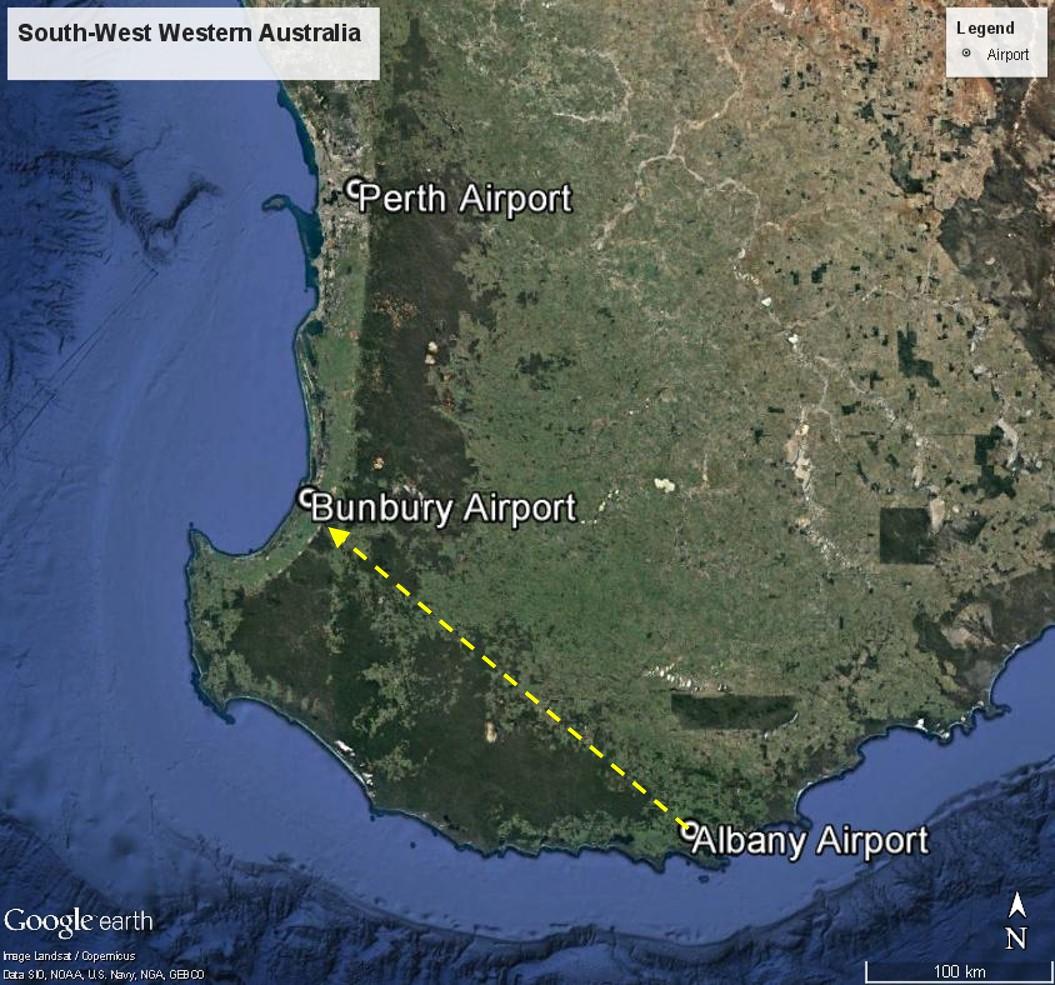
The investigation into the in-flight break-up of a Cessna 210 near Albany, Western Australia highlights the need for operators and industry associations to make information available to pilots and employees about support services for problematic substance use.
On the morning of 24 October 2017, the owner-pilot of VH-DBU was observed at Albany Airport preparing the aircraft for the flight. A witness reported seeing the aircraft with its wheels chocked and engine operating, and the pilot outside of the cockpit. No one else was observed at the controls.
After refuelling, the aircraft took off on a private flight to Bunbury with the pilot as the sole occupant on board.
It appeared that the pilot undertook some local flying before departing the Albany area. When about 30 km to the north-west of Albany a number of witnesses reported hearing, and in some cases seeing, the aircraft fly overhead. Witnesses recalled hearing a distinctive noise described as a sharp bang, crack of a whip, gunshot, or thunder and lightning. The aircraft was then seen in a steep descent until it disappeared out of sight, with smoke appearing shortly after indicating a post-impact fire.
The wreckage of the Cessna was located later that day dispersed over a wide area in the Mount Lindesay National Park, with the pilot found to be deceased.
The investigation found, for reasons that could not be established, abnormal operation of the aircraft produced high levels of unusual aerodynamic loading that exceeded the strength of the right wing and initiated an in-flight break-up and impact with terrain.
…the risks associated with continuing to operate with problematic substance use and the benefits of accessing help and support far outweigh the risks of a self-referral…
No pre-existing aircraft structural deficiency or damage, which could have contributed to the in-flight break-up, was found during the investigation. Local weather at the time was generally calm and clear.
A postmortem of the pilot carried out at the direction of the coroner found no evidence of significant underlying medical issues. However, an accredited forensic science laboratory toxicological examination found the presence of methylamphetamine in the pilot’s system. The ATSB found that it increased the risk of operational misjudgements or mishandling due to impairment and involuntary action or inaction due to incapacitation, but this did not necessarily contribute to the accident.
The ATSB’s safety message from this investigation is for operators and industry associations to consider how they can make information available to pilots and employees about support services for problematic substance use.
A self-referral for problematic substance use may be perceived as a threat to a pilot’s ongoing employment in aviation. However, the risks of continuing to operate with problematic substance use and the benefits of accessing help and support far outweigh any perceived risk of a self-referral.
Information for pilots should highlight that the Civil Aviation Safety Authority’s aviation medical framework allows pilots in stable remission to return to work. Information should include the increasing availability of employer and independent peer support organisations.
Further, the ATSB encourages pilots concerned about alcohol and drug use to visit the Human Intervention Motivation Study (HIMS) website. A cornerstone of HIMS is the understanding that substance dependence is a treatable medical condition, and is modelled on well-established overseas programs that have assisted thousands of pilots return to work.
Read the report: In-flight break-up involving Cessna 210B, VH-DBU, 30 km north-west of Albany, Western Australia, on 24 October 2017


